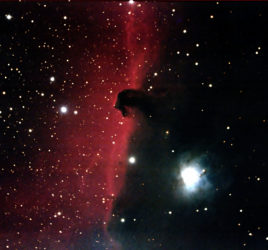
The Magellanic Clouds are not in Orbit about the Milky Way
The Magellanic Clouds have been often described as satellite galaxies of the Milky Way in modern times.
The large is about 160,000 light years away and spans about 14,000 light years in diameter. The Small is about 200,000 light years away and spans about 7,000 light years. Both have the characteristics of dwarf barred spiral galaxies that have been distorted by the Milky Way’s powerful gravitational influence. The Milky Way is about 100,000 light years in diameter.
The Magellanic Cloud’s stars have lower Metallicity compared to Milky Way stars.
There is a bridge flow of Hydrogen gas between the Milky Way and both of these dwarf galaxies. By mass, they have a greater percentage of gas to stars than the Milky Way. The stars in the Clouds have a lower proportion of about half to a quarter of the heavy elements compared to Milky Way stars. That is termed metallicity. This indicates lower rates of massive star formation since creation 13 billion years ago. Currently, the gravitational havoc induced by the Milky Way is causing stars to from in the Clouds at a much more rapid pace and many large stars are forming that will increase the metallicity of future stars in the Magellanic Clouds.
The Magellanic Clouds are visiting Galaxies who will escape the Milky Way’s grasp.
This fact and newly measured velocities of these dwarf galaxies by the Hubble Space telescope leads us to conclude that these are not satellite galaxies at all. They are merely flying by at high speed and that this close encounter is a first time occurrence. The Magellanic Clouds have enough velocity to escape the Milky Way and fly about the local group. They will be changed by the effect of the close encounter and undergo a burst phase of star formation. That should increase the likelihood of life friendly planets being created in the Clouds of Magellan.



